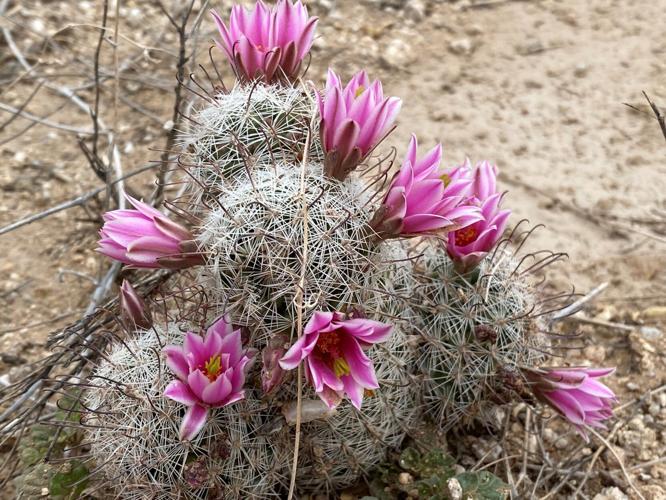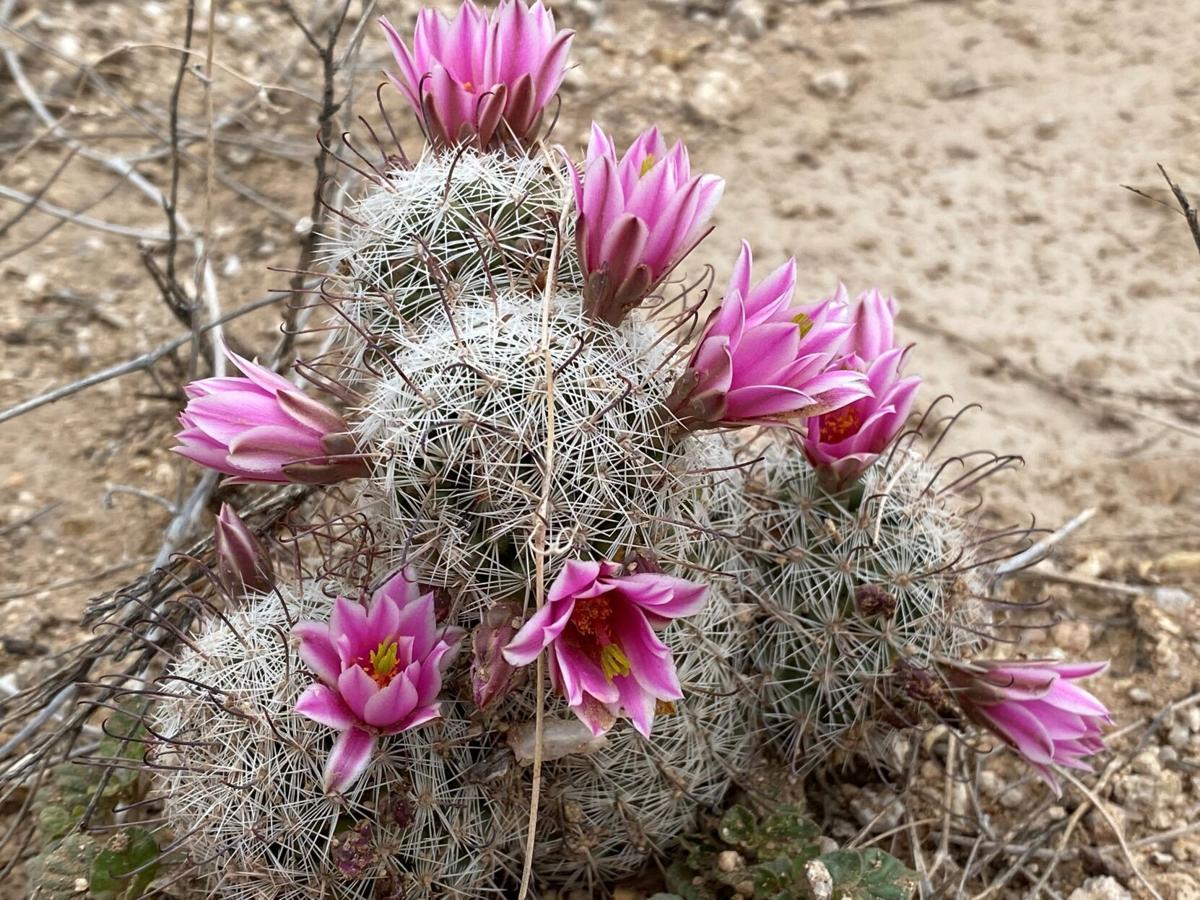Pincushion cactus (Mammillaria grahamii) goes by many names, and is likely to be blooming during the spring, and also the late monsoon, with a flowering season spread out from April to September.
These native cacti are very small, growing only about 6 inches tall and 1½ inches wide, but their flowers and fruit are beautiful. They bloom in a crown of small pink star-shaped flowers which then turn into bright red fruit. The body of the cactus is a grayish green, which can be hard to spot in brushy areas.
Pincushions often grow as solitary plants, but they may also form groups and multi-stemmed plants. The form depends on the local population. Fruits are likely to appear from September through April, and have been used in the past as food by Indigenous peoples, although some sources report that they may have hallucinogenic properties.

Pincushion cacti can grow as solitary plants. They often flower during monsoon.
In the home landscape, these tiny beauties are great for smaller cactus and rock gardens, and can bloom quite profusely if given a bit of additional water. They need sun and well-drained sandy or rocky soil. When young or newly planted, they prefer a bit of shade from the afternoon sun. They are very low maintenance. Do not overwater these, as they will get root rot and die.
In the wild, these cacti are one of the few plants that likes to grow with creosote bush, which probably serves as a nurse plant for them. As mentioned, they prefer some shade when young, so it’s likely that the creosote bushes provide young pincushions with the shade they prefer. Thus if you have creosote shrubs in your landscape you may consider planting these little guys underneath for some variety and color.
Because of their low soil needs, these cacti do well in pots, although care must be taken so they are not overwatered.
Watch now: These beautiful native plants will be a great addition to your Tucson garden. Video by Dominika Heusinkveld/Arizona Daily Star.






